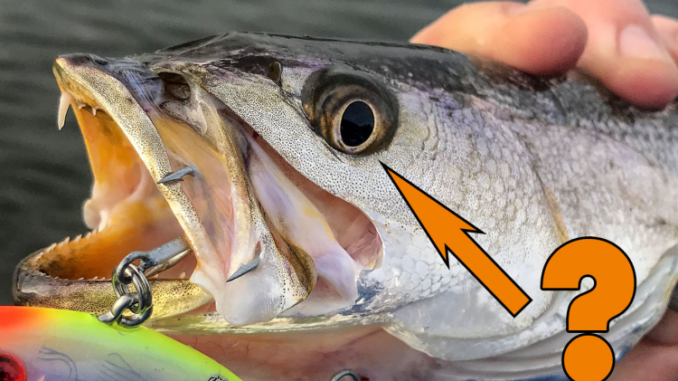
Or are all those lure colors out there designed to catch you – and not the fish?
Nothing really compares to the wide range of color found inside an inshore angler’s tackle box.
I don’t know of any Mardi Gras parade that throws beads with more of a rainbow variety, or even any woman who possesses more shades of nail polish and eye shadow in her makeup kit.
But is it really worth having this “full spectrum” arsenal? Can fish even see the colors to begin with? And if they can, can they discern all those slight differences?
Some say they can, others say fish are color-blind.
So which one is it? And what evidence supports each claim?
These are questions I posed and, after contacting marine biologists I know and trust, I was pointed to an interesting experiment conducted on speckled trout.
The experiment
In 2009, a group of scientists located on Chesapeake Bay set out to discover what colors speckled trout could and could not see.
You can read the entire paper here.
Note: the paper uses a bunch of technical jargon that I swear is designed to sound more complicated than what it really is, but I’ve read it and will do my best to translate what happened into plain English.
In a nutshell, they caught speckled trout with hook and line, just like me and you do, before releasing them into a massive livewell to acclimate.
After the trout acclimated, they were sedated and then removed to a smaller, light-proof tank equipped with a chamois sling to hold them in position.
The scientists then installed electrodes on the surface of the trout’s eye to measure its response to various colors produced by a bulb directly ahead.
Perhaps this is beginning to sound like a mad-scientist movie to you, but the work they conducted is rather routine, called “electroretinography” — a $10 word describing how scientists measure the electrical responses of cells in the eye.
It’s used all the time by optometrists for the diagnosis of retinal diseases, and chances are you’ve probably had one done.
Anyway, the scientists recorded the results and thereafter dissected the eyes of other trout, exposing them to the entire light spectrum to see which colors passed through or were absorbed.
The results
In a nutshell, yes, speckled trout can see color. (So you can really justify to your wife or girlfriend that every lure shade in your tackle box is absolutely vital to your success as an inshore angler.)
Specifically, they see colors ranging from 400nm to 610nm, with violet occurring from 380-450nm, green from 495-570nm and red from 620-750nm.
To put those numbers into perspective, our human eyes can see color from 390-700nm.
In fact, the paper goes on to explain that a speckled trout’s eyesight is similar to that of “freshwater teleosts,” which I assume include largemouth bass.
This is interesting because we have far more data on largemouth bass, given how easy they are to keep alive and their popularity as “America’s fish.”
A simple Google search revealed far more information.
Conclusion
I love this experiment because it sheds light (no pun intended) on what speckled trout really can and cannot see.
However, I can only put it into the “cool to know” category, as it isn’t going to replace experience gained from time on water, and certainly doesn’t account for everything else that goes into a successful fishing trip.
The rest of those details are what I cover at my website, Louisiana Fishing Blog.
Editor’s Note: Devin Denman is an avid inshore fisherman. To read more of his articles, visit lafishblog.com.


